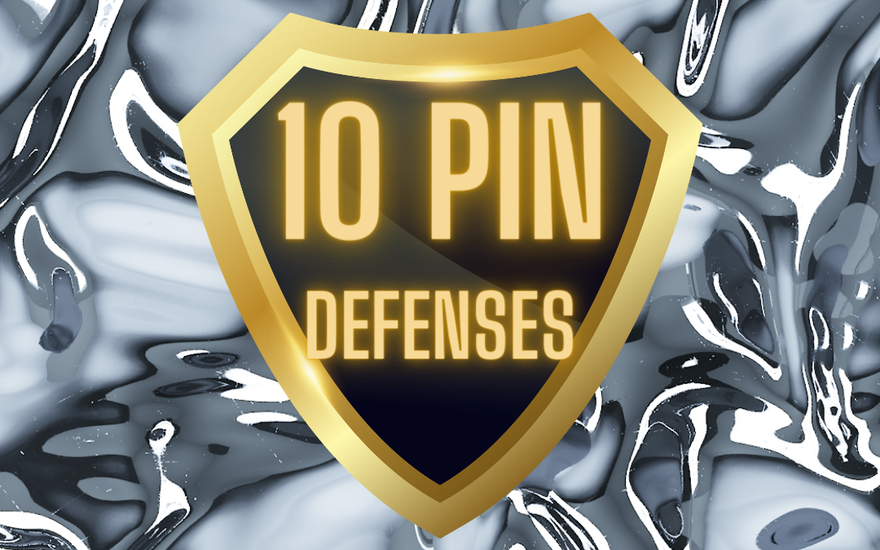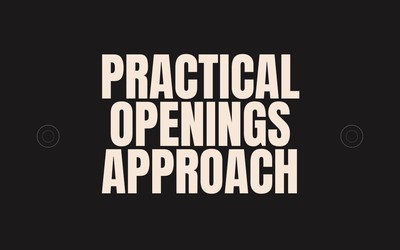
Ryan Velez
10 Pin Defenses
Are there reliable pin defenses?Pins
Yes, there are reliable pin defenses; but, take time to understand the nuances about pins before learning the various defenses. For example, pins are usually the earliest tactical opportunity, so they come up often. Most people don’t consider this point, but it sheds light on why so many beginners pin knights at the earliest opportunity.
There are 4 evaluative terms we should cover before moving forward:
Bad Pin
A pin that should not be played because it would benefit the opponent.
Good Pin
A pin that is right to play, and will benefit you.
Neutral Pin
A pin that can be defended.
Validated Pin
A Bad or Neutral pin that becomes a Good Pin through errors.
Bad, Good, Neutral, and Validated are not global terms for pins; however, I use these terms to give context for evaluating pins. The terms Absolute Pin and Relative Pin are also important when discussing pins.
Absolute Pin
Relative Pin
How do I know if a pin will be good or bad?
Conditions that make a pin good or bad are provided by the opponent through errors. The conditions, and how they arise, vary, but they always involve weak squares. If conditions are not enough to make a pin good, then the pin is bad (or at best, neutral). Always play good pins, avoid playing and validating bad pins, and neutral pins should have a purpose beyond the pin itself.
Conditions for Good Pins
The more conditions that are met, the stronger the pin:
- The pinned piece is on a weak square.
- There are weak squares around the pinned piece.
- The number of pin defenders is low.
- The number of pin attackers is high.
- The 10 pin defenses are unavailable or insufficient.
10 Pin Defenses
Specifically, the 10 pin defenses help deal with bad pins and neutral pins. If a pin is good, or validated, then nothing can be done, even with perfect play, unless the opponent errs. These 10 pin defenses specifically help you deal with amateurish pins, and there are a lot of people playing these pins daily.
Final note: this list is not exhaustive. There are many ways relieve a pin. The following ways demonstrate very common scenarios that come up during all phases of the game. Amateurish pins are most common in the opening, but several examples occur during middlegame and endgame scenarios.
Defense 1 - Interpose
Interposing is extremely common, especially early in a chess game. A bishop can be used to “break the pin” by putting itself between the shielded piece and the target piece:
Defense 2 - Defend, then Unpin
All this defense aims to do is replace the piece that must recapture the pinned piece. This simple action allows the target piece (that is, the valuable piece keeping the pinned piece frozen in place) to leave because the pinned piece’s defense has been assigned to a different piece:
Defense 3 - Pawn Avalanche (Chase Away)
The pawn avalanche chases the bishop away with capture threats:
Defense 4 - Guard Flight Squares
Guarding flight squares is a common way to solve a pin because it forces the pinning piece to retreat or capture:
Defense 5 - Unpin and Guard
Often, the target piece can move to a new location where it can still see the pinned piece. This means the target piece changes defense angles and becomes unaligned with the pinning piece. A second example of this occurs in the annotations during Annotated Game move 42 below.
Defense 6 - Guard and Unpin
Instead of moving the target piece to unpin, move the shielding piece to defend the target piece. This strategy works only when the pinning piece and target piece are the same value (or there is a tactical reason the pinning piece cannot capture the target piece):
Defense 7 - Unpin with Check
Unpinning by throwing a check is a very common way to solve a pin:
Defense 8 - Unpin with a Threat
There are millions of examples, but unpinning with a non-check threat is fairly common, too. It requires tactical skill, but is highly effective:
Defense 9 - Make a Better Offer
When the pinning piece redeploys itself either through minor urging or voluntarily, the pin is solved:
Defense 10 - Accept Consequences
Sometimes breaking a pin simply by moving away works, but be sure you’re right.
Annotated Games with Pins
We now look at an assortment of annotated games that feature prominent pins. The analysis spotlights the pins that happen throughout the game, and ignores everything else.
Annotated Game 1
Annotated Game 2
Annotated Game 3
Annotated Game 4
https://lichess.org/study/LcPxaMGB/icY2yfwH#0
Annotated Game 5
https://lichess.org/study/LcPxaMGB/VIPFvjf3#0
Annotated Game 6
https://lichess.org/study/LcPxaMGB/GyPwuMB6#0
Annotated Game 7
https://lichess.org/study/LcPxaMGB/cua7E4wr#0
Annotated Game 8
https://lichess.org/study/LcPxaMGB/VCmQGwYZ#0
Annotated Game 9
https://lichess.org/study/LcPxaMGB/XQrLZ9oV#0
Annotated Game 10
https://lichess.org/study/LcPxaMGB/s7f6Qu3a#0
Annotated Game 11
https://lichess.org/study/LcPxaMGB/Jg5LWdm1#0
Annotated Game 12
https://lichess.org/study/LcPxaMGB/0YvJf9FE#0
My articles are always free, but if you would consider supporting me Patreon, my name on there is Exploring Chess.
More blog posts by RyanVelez

Practical Openings Approach
This post is for people who need to learn openings, but struggle.
Resigning Strategy
This article is for anyone who wants to understand the strategy of resigning, at both low and high l…
I want to improve, but I'm busy !!!
This article is for people who want to improve but are busy, and for anyone who wants to know how to…